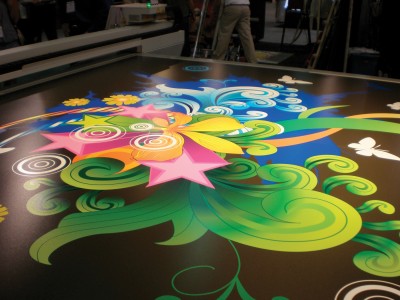Mercury vapour lamps are well-established and entail lower component costs, but in addition to generating more heat, they consume more electricity per square metre of cured output. They need to be warmed up for 30 to 60 seconds after being switched on until they reach optimal intensity. And mechanical shutters are required to switch the light on and off. Further, while the lamps are inexpensive, they will need to be replaced every 500 to 1,000 hours of operation.
UV-LEDs are more expensive, but typically reduce power consumption by 50 to 75 per cent. They do not require any warm-up time and can be switched on and off in milliseconds, without needing mechanical shutters. They can last for thousands of hours, though they are usually mounted in arrays that are very expensive to service if they run into a problem.
Power consumption
Electricity prices are on the rise. When considering a flatbed printer, it is important to check the required wattage and amperage, including the printer’s maximum sustained load. Ideally, it should use less than 3,500 W of peak power—and single-phase power, rather than the more energy-hungry three-phase option. And it is worthwhile to check whether or not the printer is designed to remain powered on at all times.
Physical environment
When considering printer size and space requirements, it is important to ensure the machine can be moved into its intended installation location, preferably without having to remove existing walls or windows. A particularly heavy printer—or one assembled from components—might need a rigid floor (e.g. concrete) for installation.
As mentioned, a true flatbed is generally larger than a hybrid printer, but does not need additional media handling space. Belt/pinch systems, on the other hand, require a board’s length on each side of the printer for media transport. This can mean up to 5.9 m2 (64 sf) of extra space needed.
Service and support
As a valuable business tool, a UV printer needs to stay in top condition. This calls for knowledgeable support for the—hopefully rare—instances when it does not work properly.
Indeed, choosing the right service and support team is just as important as choosing the right printer, whether the technicians are employed by the printer’s manufacturer, a local reseller or a third-party service organization.
Support goes beyond service. A printer vendor will ideally provide assistance not only for its own machine, but also for the aspects of production related to it, including file setup, workflow software, colour management and substrate selection.
Other important factors include the length of the warranty period, what it covers, the standard response time for a service call, ‘second-level’ support if there is a delay in repairs, supply chain logistics for replacement parts and options for self-servicing the printer.
With files from Océ Display Graphics Systems, a Canon Group company. For more information, visit www.oce.ca.






